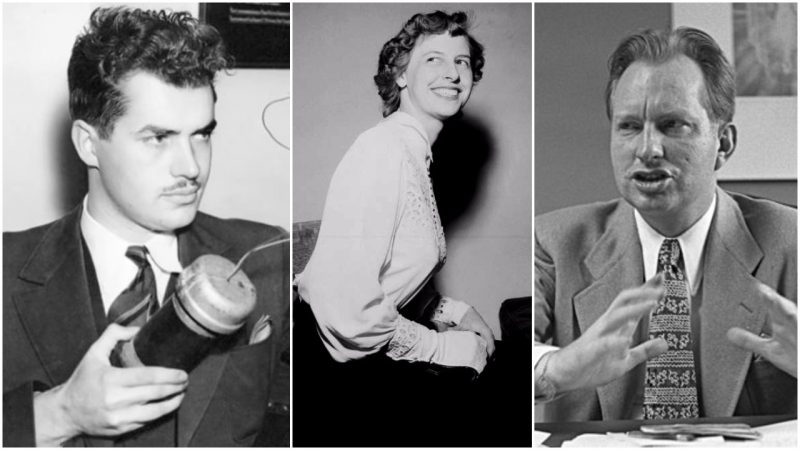Who says science and religion can’t go hand in hand? It sure isn’t Jack Parsons, the talented California inventor and space pioneer who by his mid-twenties managed to lay the foundations for rocket science and helped humans launch into space. He wasn’t a churchgoer, though. Not the kind of church most Americans had heard of in the 1930s and 1940s.
A Bruce Wayne type of character, Parsons during the day worked as a science engineer and made a fortune exploring the physics behind jet propulsion, and by night, instead of fighting crime as the cloaked vigilante of Gotham City, he was a cape-wearing occultist and a pagan worshiper who sought to create a spawn of Satan in Pasadena.
An intriguing individual to say the least, Parson had a short-lived existence packed with twisted sex rituals and frequent drug abuse that makes William Moulton Marston, the inventor of Wonder Woman, seem nice and normal and the Kardashians look like nuns.
Jack Parsons is both America’s renowned rocketeer and one of the most infamous God-profaning acolytes that humanity has ever known. He was a devotee of satanist Aleister Crowley and a fetishist who befriended L. Ron Hubbard, for a time sharing the same 17-year-old girlfriend. Through various sexual practices, he thought he could summon a dark deity from the underworld. Lastly, he was a man who impregnated a fellow practitioner of the dark arts, nicknamed “Candida,” so that she could give birth to the Antichrist.

His intermingling of science and fiction started at the age of 13, when he claimed that he had conjured Satan by accident. This was a terrifying experience that according to him changed his life and made him deeply fascinated by the supernatural and mystical part of human existence.
Or perhaps he was mentally unstable, as many he encountered seemed to think. He was by any definition different. Even as a young boy, he was trying to propel rockets using gunpowder from his backyard, while his classmates struggled to assemble jigsaw puzzles. This was a time when rocketry was never discussed in school; it was considered science fiction.
In 1930, Parsons succeeded in his childhood ambitions and became the chief engineer at the California Institute of Technology (Caltech) and co-founder of the Jet Propulsion Laboratory (JPL). Today, we have a rover exploring Martian landscapes 33 million miles away from us, and it was a “mad scientist,” schooled by early science-fiction novels, who got us there.
We can explore the ideas of the time by looking at Yevgeny Zamyatin’s We, written in 1920, which was probably the first novel that dealt with the prospect of a dystopia future in which almost every aspect of human interaction, including sex, is governed and regulated. A highly eccentric novel of the same year that explored the concept of space travel, A Voyage to Arcturus, penned by the Scottish writer David Lindsay, was simultaneously and adeptly battling the very darkest philosophical aspects of death and the universal nature of existence.
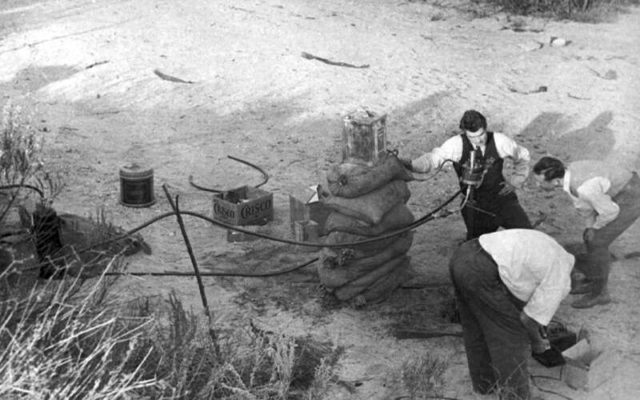
Another influential book was The Blind Spot, which was a novel first published partially as stories in the Argosy “All-Story Weekly” magazine. This is where authors Austin Hall and Homer Eon Flint presented a scientifically elaborated and curious case of coexistence of parallel universes. These ideas have now been chewed up to the extent that it’s not even funny anymore, yet in this time period they were considered controversial, provocative, and way ahead of their time.
Along with ideas that were as innovative as some of the minds of the people reading them, there was Parsons, who was fanatically searching for something more, something bigger than life, something magical perhaps. In retrospect, he was probably influenced by David Lindsay and other authors who with their stories made him strongly believe that man could actually fly off to the unknown. For while his views about multiple dimensions corresponded with those offered by Hal and Flint, a dimension in which life is completely governed was certainly not his cup of tea. On the contrary, as a man who always mixed science with magic and facts with fiction, he shaped a life with which he wished to live as freely as possible.
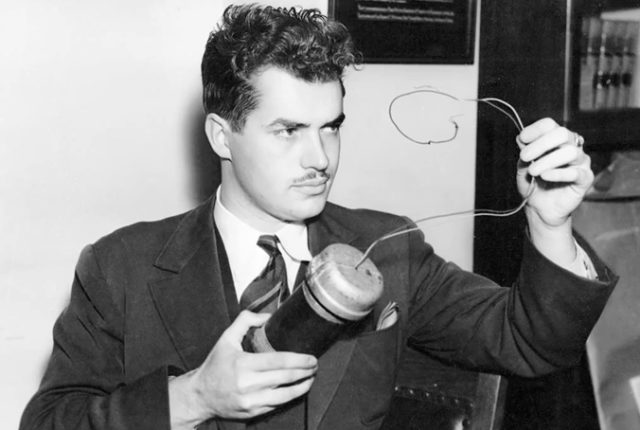
Luckily for him, a group of eccentrics sharing the same views were gathering frequently near L.A. Writers, painters, musicians, play artists, politicians, and a whole lot of wealthy philanthropists with “progressive” beliefs were calling themselves members of Ordo Templi Orientis – OTO. These men and women lived their lives by The Book of the Law, written by none other than the English occultist and “Master of Darkness” Aleister Crowley, also labeled the Wickedest Man in the World. He was their spiritual leader. By the universal language of “you attract what you are,” Parsons found his way into their circles and their secret meetings. Impressed by their motto “Do What Thou Wilt” and their lifestyle of self-realization, he was hooked by the games of mystic gallantry, spiritual seduction, and sexual fulfillment. For while these were Freemasons and Thelema worshipers, they were, most of all, people with sexual cravings.
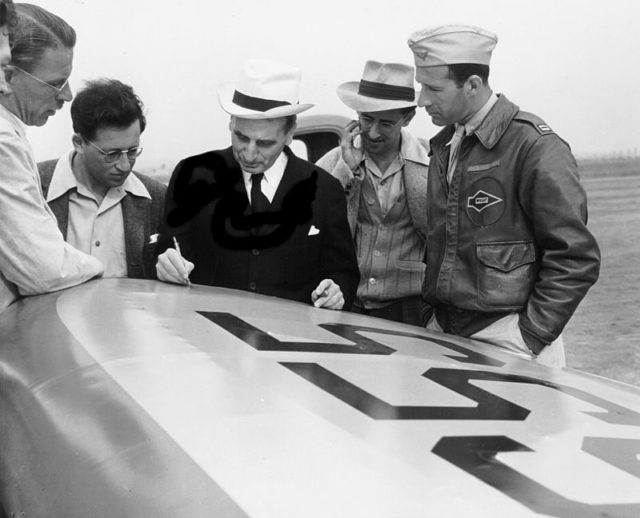
This well-read, dark, and handsome man in his twenties, a mysterious scientist who made his living by blasting things into the air, got a warm welcome from the beginning. Soon enough, he had a new “secretary” for every new day. As former colleagues of his would say, “he had a whole club there you know.” As he was moving up the ladder in the science department and his JPL came to be known as a serious establishment that struck a long-term agreement with the U.S. military, he was also doing well in the magic department. financially speaking. He used the money he earned to buy an enormous house, surrounded by acres of spacious, sweeping lawns on Pasadena’s South Orange Grove Boulevard, known back then as the Millionaire’s Row, making it the central meeting place for OTO. As the head of the organization on the West Coast, he was in charge and living big, with his wife Helen Northrup Hollister by his side as well as her 17-year-old sister Sara, both members and Thelema congregants.

There were, in fact, quite a few people who lived in Parson’s house and the long hallways buzzed with all sorts of weirdness and sexual perversion. Liljan Wunderman, the wife of Parsons’ lifelong friend, business partner, and fellow aeronautical engineer, once described the atmosphere in his pleasuredome, nicknamed the Parsonage, as “walking into a Fellini movie.” In George Pendle’s book Strange Angel: The Otherworldly Life of Rocket Scientist John Whiteside Parsons, an ambitious attempt to provide some much-needed clarity to the life of the enigmatic scientist, Wunderman reflects on a party she attended there, “A big, big thing, full of people. Some of them had masks on, some had costumes on, women were weirdly dressed.”

In this Fellini movie, the main protagonist was enjoying his wonderful life, living with his wife, while all the time openly having a sexual relationship with her younger sister under the same roof. And then one morning, a mysterious person with dark shaded glasses and a shiny cane knocked on the front door and introduced himself to the owner. He was a World War II veteran with a lot of stories under his belt, and the name given was Captain L. Ron Hubbard. A science fiction writer who had witnessed first hand a brand new technology being employed on the battlefield, he wanted to meet the inventor he had heard a lot of stories about.
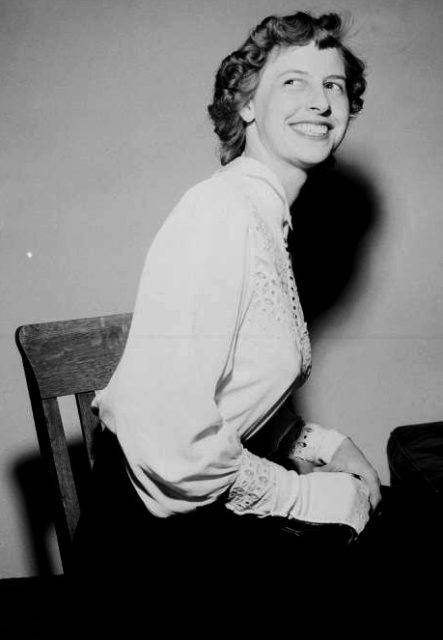
Hubbard told a lot of compelling tales about the war, science, magic, and life in general, for he was also taken by the strange and the unknown, and Parsons soon befriended him, offering him an indefinite stay in his home. It is said that there was not a single person there who remained indifferent to Hubbard’s seductive persona.
In time, a person very close to Parsons fell under this spell, the 17-year-old Sara. Parsons had grown to love her very much, but he didn’t mind Hubbard’s affair with her because Thelema approved and they were first and foremost allies in his greatest desire: to summon a redheaded Babylonian goddess to earth who would give birth to the unholy, the Antichrist, “Thy tears, thy sweat, thy blood, thy semen, thy love, thy faith shall provide. Ah, I shall drain thee like the cup that is of me, BABALON” – John Whiteside.
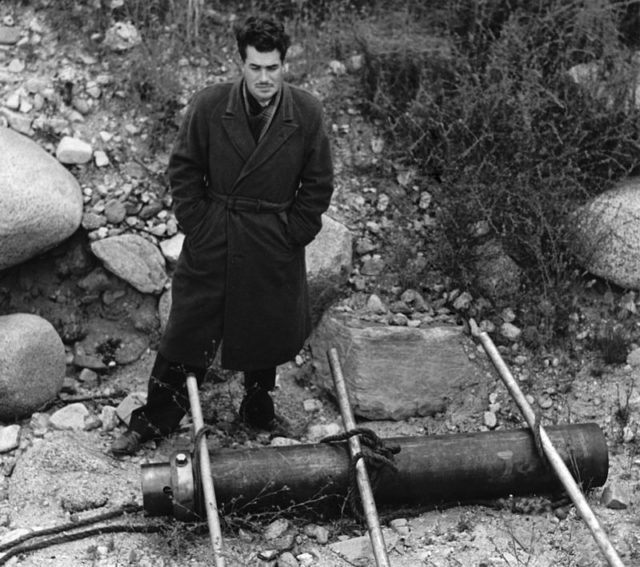
George Pendle’s book, as well as another one written by John Carter, Sex and Rockets: The Occult World of Jack Parsons, offer in great detail a picture of what went on during those days. According to the authors, a lot of sexual energy expended by Parsons was required for that sensual entity to come to life, with Hubbard the scribe.
A red-haired woman did knock on Parsons’ door, in the form of Marjorie Cameron, an aspiring actress, a beauty to behold and, interestingly, a Hubbard acquaintance. Parsons strongly believed that he had succeeded in invoking the “elemental” woman, and after he divorced his first wife, he married Marjorie.
However, first Parsons went through a swindle. He was paid $20,000, or his shares in JPL, which he gladly accepted so that he could resume his Babylonian “work” uninterrupted. This $20,000 he gave to Hubbard as an investment, who instead, bought a boat and ran off with Sara to Mexico.
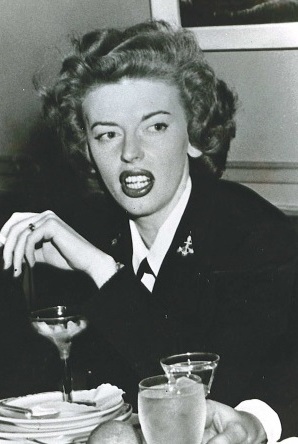
Parsons’ Babylonian Goddess, Marjorie, became pregnant. However, she opted to abort the baby instead of giving birth to the Antichrist. Parsons, no longer wealthy, was broken by the downturns in his life, but there was one last blow yet to come. He literally blew his face off in an explosion while performing a ritual in his home laboratory. He died from complications within months, on June 17, 1952. He was 37 years old and died with the knowledge that he had almost succeeded in his life’s greatest challenge but was betrayed by humanity.
His second wife, who he nicknamed “Candida,” kept his surname and came to be somewhat successful, staring in Kenneth Anger’s Inauguration of the Pleasuredome two years after her husband’s death. She also became an artist whose paintings received considerable attention.
As for Hubbard and Sara, they created Dianetics, which would evolve into Scientology.
